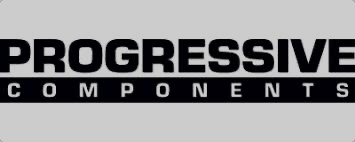The next level of CNCs promises to support users at every stage along the way, from initial design to the finished workpiece.
When the 5-axis machining technology wave started a few decades ago, many users mainly were concerned about 3+2-axis applications and getting their CAM post-processor rewritten to accommodate the new CNC plane functions for 5-sided machining. A few years later, verification software was developed to provide full simulation of a 5-axis toolpath and even generate NC code for some CAM system outputs.
In the last two years, those in machine shops have dealt with the challenges of experienced programmers and operators leaving the workforce and a new generation workforce is coming in. Fast forward to today, machine shop owners want to take advantage of Industry 4.0 and its Industrial Internet of Things (IIoT) initiatives, process improvements, and, certainly, automation of 5-axis machining centres.
To do so, it means that many manufacturers need to rethink what a modern 5-axis CNC motion control system should look like. As you probably noticed, I added the term motion control before system, which is becoming, in my view, a critical component to developing next-level 5-axis CNC technologies.
Here is a short list of other critical components in the next generation of 5-axis CNCs:
Industry 4.0/IIoT
Looking to the now and the near future, modern 5-axis controls can—and should—be able to connect seamlessly to a company’s internal computer network to access CNC programs, set up data sheets, and maybe even get access to the CAM system as needed.
To be effective, this should all be able to be done right at the fingertips of the CNC operator within an Industry 4.0 or IIOT operation. Also, data output via different IT protocol formats needs to be readily available because it is essential when interfacing with future monitoring systems and databases for manufacturing execution systems (MES) and enterprise resource planning (ERP) systems.
Next-generation CNC systems need to be poised to help shop managers make the educated decisions required for 5-axis machining based on data, not gut feeling, to solve shop bottlenecks and also easily measure productivity improvement.
Currently this productivity review includes 5-axis versus standard vertical machining centres and standard 5-axis machining centres versus high-dynamic 5-axis machining centres. This means future CNCs need to be capable of working with protocols like MTConnect and OPC Unified Architecture (OPC UA), a well-known international standard, to collect data from different machine components for maintenance purposes as well as for in-process motion data collection.
Process Improvements
More next-level technology that 5-axis machining systems will include are calibration cycles built right into the CNC. This 5-axis kinematics (aligning and calibrating all five axes) motion technology will help to ensure process reliability and maximize part accuracy and surface finish quality.
This only works well if the CNC is connected to a closed-loop feedback system with high-precision angle/linear encoders (also known as glass scales), which guarantee precision axis positioning and repeatability in simultaneous 5-axis motion.
Accurate tool measurement is becoming a very critical requirement when ensuring high accuracy and superior surface quality in 5-axis simultaneous machining.
Another process improvement to look forward to in 5-axis machining is the next level up from using touchprobes for part set up: a camera system. Camera/vision systems are becoming more reliable in industrial applications, and more affordable as well. Not only must a 5-axis CNC with a camera be capable of storing high-resolution pictures, it also must be able to compare pictures and identify discrepancies to stop or alter the process flow, if necessary.
This technology is like the face recognition feature common on mobile phones today.
It is important to note that camera systems also can provide tool inspection to ensure accurate tool measurement. Accurate tool measurement is becoming a very critical requirement when ensuring high accuracy and superior surface quality in 5-axis simultaneous machining.
Tool measurement is especially critical for those using tool centre point management (TCPM) to its highest level, and it is a must for all modern 5-axis CNCs.
Automating Down to a Lot Size of One
The future of 5-axis CNC machining includes enabling accurate automation, not only for mass production, but also down to a lot size of one. To obtain a highly accurate, low-volume of high-value parts via an automated 5-axis system, it is vital that the CNC be connected to a reliable, repeatable, and accurate motion system. It also is important that the cutting tool used is controlled accurately within 5-axis dynamic applications [TCPM], otherwise it will not be able to machine the first part correctly.
The second important factor to look for when automating small-lot production using 5-axis machining is CNC flexibility. The newest CNCs enable the machine manager to set up priorities at a moment’s notice, including what pallet is processed and in what order. From there, the CNC should be able to be set to determine automatically if all critical information is ready, such as the CNC program, tool data, remaining tool life, and datum setup, before the next part can be reliably machined.
CNCs for the Next-Generation Workforce
With newly available CNCs encompassing the latest standards for efficiently working within 5-axis machine tools, the next generation of machining begins now. These CNCs, geared toward a new generation of workers, provide optimal user guidance through all processes thanks to task-focused designs, powerful visualization technology, and help functions for programming, setup, and machining.
The next level of controls promises to support the user at every stage along the way, from initial design to the finished workpiece. Support is promised no matter whether it is one-off pieces or serial production, complex contours or simple slots, or during setup or actual machining. For expert machinists, the new generation of CNC opens up new possibilities with an exceptional user experience, with features that include intuitive, task-focused, and customizable operations.
Some of the highlights included within the newest CNC offerings incorporate software optimized for touch operation to allow the highest levels of performance. For example, users now can easily draw contours right on the touchscreen. Also, today’s enhanced CNC programming language offers new smart functions and newly developed graphical programming. The numerous smart functions greatly simplify daily work, advance production operations, and boost process reliability.
Also, workpiece and work envelopes in the next generation of CNCs now can be virtually simulated for every task, providing the user with continuous 3D visualization support.
HEIDENHAIN’s next generation TNC7 control will be introduced to North America at IMTS 2022 (Sept. 12-17) in Chicago.
And rounding off the new designs are operating components with optimized ergonomics for working right at the machine.
8 ways CNCs empower next-gen operators
- Beginners and experts alike have the ability to rapidly program even the most complex workpieces. This is achieved by combining new graphical on-screen programing with an existing familiarity with current programing languages.
- Users are provided with the convenience and ergonomics of using a keyboard and trackball if desired.
- CNCs are standardized with a 24-in., full-HD, anti-reflective screen that is optimized for the shop floor.
- New, intuitive machine setup options have smart probing functions.
- Graphical support aligns workholding equipment with full, dynamic collision monitoring.
- New, integrated process monitoring enables a constant 3D view of the machining quality.
- Users are provided with intuitive operating technology for everyday production tasks, including complete integration of program testing with high-resolution simulation of the machining process in the programming mode.
- Users can adapt the screen’s content to their individual tasks, always seeing exactly what is needed by:
- Selecting workspaces and arranging them on screen as needed for the given task
- Setting favourites for files, status notifications, and NC functions
- Providing a “Home” menu for a rapid start
- Allowing personalized settings in the user-administration function
All in all, with its optimized operating design, the next generation 5-axis CNC promises to take manufacturing to a new level.
Reposted from Canadian Metalworking https://www.canadianmetalworking.com/canadianmetalworking/article/metalworking/what-is-next-for-5-axis-cnc-technology






